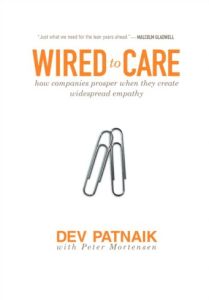Join getAbstract to access the summary!

Join getAbstract to access the summary!
Dev Patnaik
Wired to Care
How Companies Prosper When They Create Widespread Empathy
FT Press, 2009
What's inside?
Why empathetic companies do well…or why act like you have a reptilian should be reptilian brain when your customers are all heart?
Recommendation
Executives often know little about the people who buy their companies’ products and services. This is not surprising. To study people, you must care about them. However, most companies eliminate empathy from their operations. In essence, they proceed as if they have calculating, survival-bent reptile brains. Profits drive everything. This is an odd disconnect because corporate livelihoods depend on people – not lizards – and people’s brains are hardwired to be empathetic. Dev Patnaik (writing with Peter Mortensen) shows why firms that connect empathetically with their customers do better financially. He insists today’s cold-hearted, bottom-line business world has room for caring companies, and he points to IBM, Nike and Harley-Davidson as examples. The fact that empathy is also a strong business strategy is icing on the cake. getAbstract suggests this fine book to CEOs, marketing officers and other executives who want to build their business by acting on their respect for their customers. As Patnaik explains on his blog, “Empathy isn’t about having a visionary leader. It’s about making customer information an easy, everyday and experiential part of working at your company.”
Summary
About the Author
Dev Patnaik is the founder and head of a San Francisco growth strategy firm. He teaches “Needfinding” at Stanford University. Peter Mortensen is in charge of communications activities at Patnaik’s firm. He is a Wired blog contributor.
















Comment on this summary